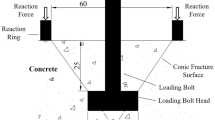Abstract
Concrete in reinforced concrete structure (RC) is generally under significant compressive stress load. To guarantee required quality and ductility, various tests have to be conducted to measure the concrete's compressive strength based on ACI (American Concrete Institute) code. Investigations of recent devastating, collapses of structures around the world showed that some of the collapses directly resulted from the poor quality of the concrete. The lesson learned from these tragedies is that guaranteeing high quality of concrete is one of the most important factors ensuring the safety of the reinforced concrete structure. In order to ensure high quality of concrete, a new method for analyzing and evaluating the concrete production process is called for. In this paper, the indices of fit and stable degree are proposed as basis to evaluate the fitness and stability of concrete's compressive strength. These two indices are combined to define and evaluate the quality index of the compressive strength of concrete. Principles of statistics are used to derive the best estimators of these indices. Based on the outcome of the study, a concrete compressive strength quality control chart is proposed as a tool to help the evaluation process. Finally, a new evaluation procedure to assess the quality control capability of the individual concrete manufacturer is also proposed.
Similar content being viewed by others
References
ACI Committee 214, 1983. Recommended Practice for Evaluation of Compressive Test Results of Concrete (ACI 214-77, Reapproved 1983). American Concrete Institute, Detroit, U.S.A.
ACI Committee 318, 1996. Building Code Requirement for Reinforced Concrete (ACI 318-95) and Commentary-ACI 318R-95, Reported by ACI Committee 318.
Boyles, R.A., 1991. The Taguchi capability index.Journal of Quality Technology,23(1):17–26.
Boyles, R.A., 1994. Process capability with asymmetric tolerances.Communication in Statistics-Simulation and Computation,23:615–643.
Chan, L.K., Cheng, S.W., Spiring, F.A., 1988. A new measure of process capability: Cpm.Journal of Quality Technology,20:162–175.
Chen, K.S., 1998a. Estimation of the process incapability index.Commun. Statist.—Theory Methods27(5):1263–1274.
Chen, K.S., 1998b. Incapability index with asymmetric tolerances.Statistica Sinica,8:253–262.
Cheng, S.W., 1994–95. Practical implementation of the process capability indices.Quality Engineering,7(2): 239–259.
Chou, Y.M., Owen, D.B., 1989. On the distribution of the estimated process capability indices.Commun. Statist.— Theory Methods,18:4549–4560.
Kane, V.E., 1986. Process capability indices.Journal of Quality Technology,18(1):41–52.
Montgomery, D.C., 1985. Introduction to Statistical Quality Control. John Wiley & Sons, New York, U.S.A.
NCREE, Taiwan, 1999. Investigation of 921 Chi-Chi Earthquake Damages.
PCA, 1970. Statistical Product Control. Publication IS172T, Portland Cement Association, Skokie, IL, U.S.A.
Pearn, W.L., Kotz, S., Johnson, K.L., 1992. Distribution and inferential properties of process capability indices.Journal of Quality Technology,24:216–231.
SECL, Taiwan, 1999. 921 Chi-Chi Earthquake Brief Report, Taipei, Taiwan.
Sung, W.P., Chen, K.S., Go, C.G., 2001. The Effective Method of Evaluation for the Quality Control of Steel Reinforcing Bar.Advances and Applications in Statistics,1(2):175–193.
Watabe, M., 1995. Lessons Learnt from Hanshin-Awaji Devastating Earthquake. Proceedings of Conference for Architecture Damage in Hanshin-Awaji Earthquake, Taipei, Taiwan, p. 1-1—1-49.
Author information
Authors and Affiliations
Additional information
Project (No. NSC92-2213-e-167-001) supported by the National Science Council, Taiwan, China
Rights and permissions
About this article
Cite this article
Chen, Ks., Wen-pei, S. & Ming-hsiang, S. Reliable evaluation method of quality control for compressive strength of concrete. J. Zheijang Univ.-Sci. A 6, 836–843 (2005). https://doi.org/10.1631/jzus.2005.A0836
Received:
Accepted:
Published:
Issue Date:
DOI: https://doi.org/10.1631/jzus.2005.A0836
Key words
- Quality index of concrete
- The best estimators
- Quality control chart
- Evaluation criteria
- Fit degree of compressive strength of concrete
- Stable degree of compressive degree of concrete




